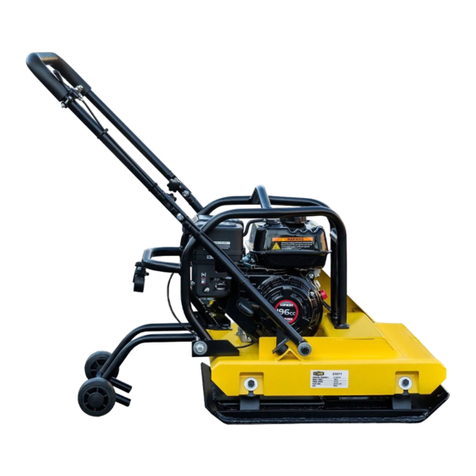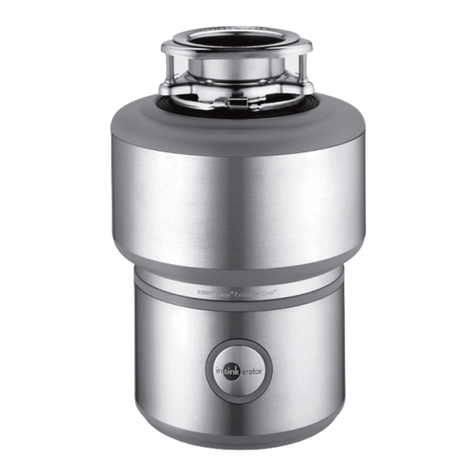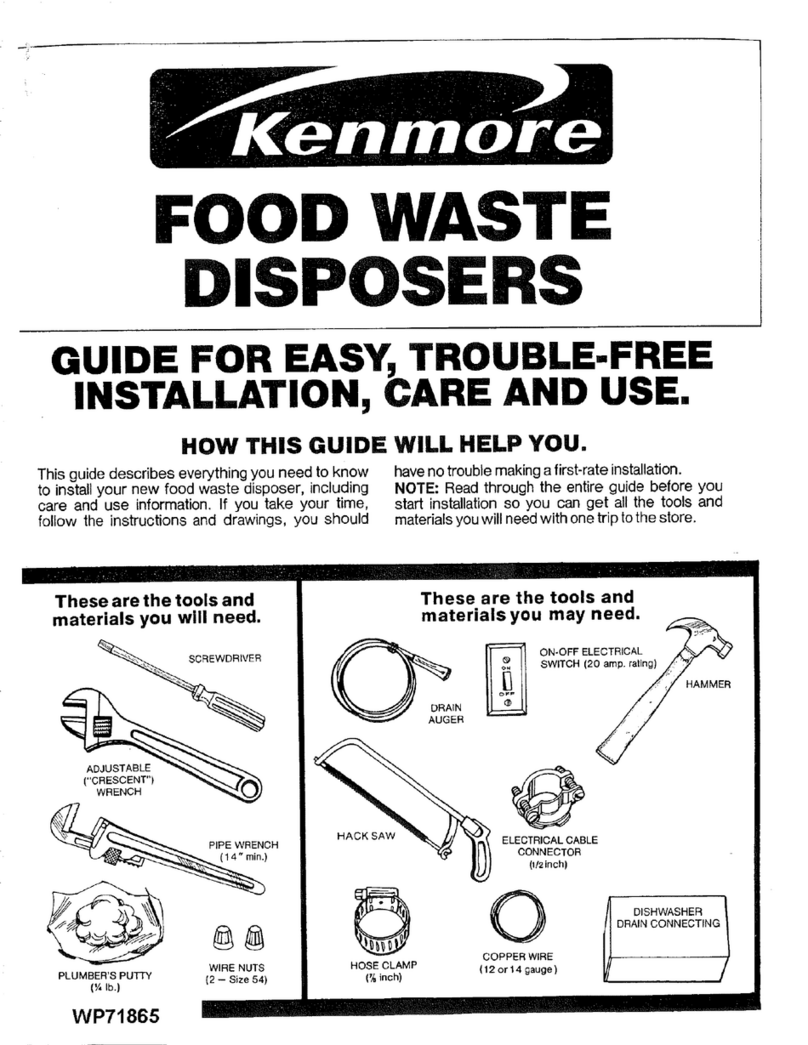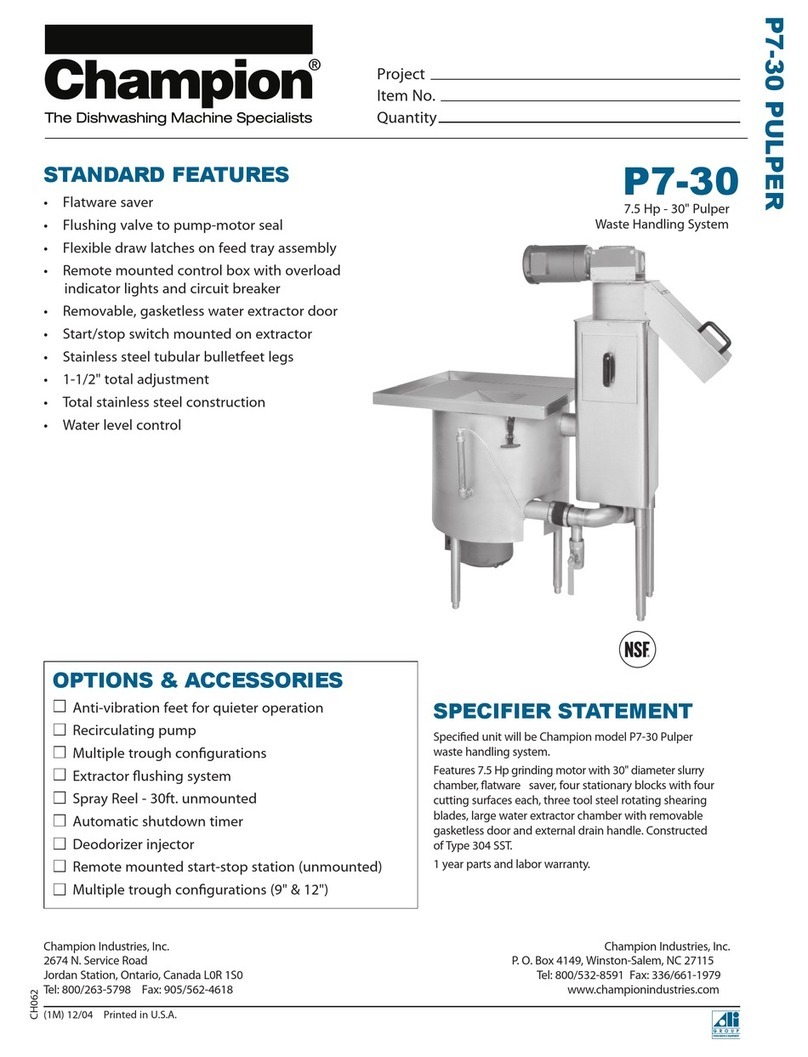Stark 61021 Original instruction manual

COMPACTOR 6.5HP
ITEM# 61021
OWNER’S MANUAL AND SAFETY INSTRUCTIONS
FOR QUESTIONS, PLEASE CALL CUSTOMER SERVICE: 909.628.4900
SAVE THIS MANUAL. KEEP THIS MANUAL FOR SAFETY WARNINGS, PRECAUTIONS, ASSEMBLY,
OPERATION, INSPECTION, MAINTENANCE AND CLEANING PROCEDURES. WRITE THE PRODUCT’S
SERIAL NUMBER ON THE BACK OF THE MANUAL, OR THE MONTH AND YEAR OF PURCHASE IF
PRODUCT HAS NO SERIAL NUMBER.

PLATE COMPACTOR
2
Specifications
INTRODUCTION
Introduction 2
Specifications 2
Symbols 3
Safety 3
General Safety Rules 3
Specific Safety Rules 5
Contents Supplied 6
Assembly 7
Know your Compactor 9
Features & Controls 9
Compactor Operation 10
Maintenance 12
Storage 15
Lifting/Transporting 16
Trouble Shooting 17
Parts Schedule 18
Parts List 19
Your new Vibratory Plate Compactor will
more than satisfy your expectations. It has
been manufactured under stringent quality
standards to meet superior performance
criteria. You will find it easy and safe to
operate, and with proper care, it will give you
many years of dependable service.
Carefully read through this entire
operator’s manual before using
your new Plate Compactor. Take
special care to heed the cautions
and warnings.
These compactors are not intended
to be used on cohesive soils such
clay or hard surfaces like concrete.
The commitment to quality has been designed
into details: reinforced self-cleaning base
plate, engine oil drain hose, closed V-belt
guard, self-adjusting centrifugal clutch and
folding handle. A range of useful accessories
enables use in all kinds of applications.
The Plate Compactor applies energy to the
loose soil or other materials to increase its
density and load bearing capacity, mainly used
for small repair and maintenance work. The
loose soil or particles are moved or rearranged
in a particular manner close to each other to
The Engine Manufacturer is responsible for
all engine-related issues with regards to
performance, power rating, specifications,
warranty and service. Please refer to the
Engine Manufacturer’s owner/operator’s
manual, packed separately with your unit, for
more information.
Item No. 61021
Plate Size 540 X 450 mm
Centrifugal Force 20000 N
Exciter Speed 5500 vpm
Compaction Speed 30 cm
Travel Speed 25.5 m/min
Engine 196cc, 4.1 kW
Operation Weight 96 kg
RECYCLING AND DISPOSAL
This marking indicates that this
product should not be disposed with
other household wastes. To prevent
possible harm to the environment
or human health from uncontrolled
waste disposal, recycle it responsibly
to promote the sustainable reuse of
material resources. To return your
used device, please use the return
and collection systems or check with
your local authority or local stores
for advice of environmental safe
recycling.
avoid any trapped air or voids. It increases
the load bearing capacity, decreases water
seepage, prevents soil settlement, reduces
swelling, contraction of the soil and prevents
frost damage. It is ideal for compaction
of granular soils, sands, gravel, crushed
aggregate and mixed soils.
SAFETY WARNINGS
TABLE OF CONTENTS

PLATE COMPACTOR 3
SYMBOLS
The rating plate on your machine may
show symbols. These represent important
information about the product or instructions
on its use.
General Safety Rules
Understand your Machine
Read and understand the operator’s manual
and labels affixed to the machine. Learn its
application and limitations as well as the
specific potential hazards peculiar to it.
Be thoroughly familiar with the controls and
their proper operation. Know how to stop the
machine and disengage the controls quickly.
Make sure to read and understand all the
instructions and safety precautions as outlined
in the Engine Manual, packed separately
with your unit. Do not attempt to operate
the machine until you fully understand how
to properly operate and maintain the Engine
and how to avoid accidental injuries and/or
property damage.
Work area
Never start or run the engine inside a closed
area. The exhaust fumes are dangerous,
containing carbon monoxide, an odorless and
deadly gas. Operate this unit only in a well
ventilated outdoor area.
Never operate the machine without good
visibility or light.
Personal safety
Do not operate the machine while under the
influence of drugs, alcohol, or any medication
that could affect your ability to use it properly.
Dress properly. Wear heavy long pants, boots
and gloves. Do not wear loose clothing, short
pants, jewelry of any kind. Secure long hair
so it is above shoulder level. Keep your hair,
clothing and gloves away from moving parts.
Loose clothes, jewelry or long hair can be
caught in moving parts.
Check your machine before starting it. Keep
guards in place and in working order. Make
sure all nuts, bolts, etc. are securely tightened.
Never operate the machine when it is in need
of repair or is in poor mechanical condition.
Replace damaged, missing or failed parts
before using it. Check for fuel leaks. Keep the
machine in safe working condition.
Read these instructions for use
carefully.
Wear eye protection.
Wear hearing protection.
Wear protective gloves.
Wear safety footwear.
It is forbidden to remove or
tamper with the protection
devices and safety devices.
Keep away from rotating parts.
Do not touch parts which are hot
from operation. Serious burns
may result.
Do not smoke or have open flames.
Use extreme caution when
storing, handling and using fuels,
as they are highly volatile and
explosive in vapor state.
Keep children and bystanders off
and away.
SAFETY WARNINGS
TABLE OF CONTENTS

PLATE COMPACTOR
4
Do not use the machine if the engine’s switch
does not turn it on or off. Any gasoline
powered machine that can not be controlled
with the engine switch is dangerous and must
be replaced.
Form a habit of checking to see that keys
and adjusting wrenches are removed from
machine area before starting it. A wrench or
a key that is left attached to a rotating part of
the machine may result in personal injury.
Stay alert, watch what you are doing and use
common sense when operating the machine.
Do not overreach. Do not operate the machine
while barefoot or when wearing sandals or
similar lightweight footwear. Wear protective
footwear that will protect your feet and
improve your footing on slippery surfaces.
Keep proper footing and balance at all times.
This enables better control of the machine in
unexpected situations.
Avoid accidental starting. Be sure the engine’s
switch is off before transporting the machine
or performing any maintenance or service
on the unit. Transporting or performing
maintenance or service on a machine with its
switch on invites accidents.
Fuel safety
Fuel is highly flammable, and its vapors can
explode if ignited. Take precautions when using
to reduce the chance of serious personal injury.
When refilling or draining the fuel tank, use
an approved fuel storage container while in
a clean, well-ventilated outdoor area. Do not
smoke, or allow sparks, open flames or other
sources of ignition near the area while adding
fuel or operating the unit. Never fill fuel tank
indoors.
Keep grounded conductive objects, such as
tools, away from exposed, live electrical parts
and connections to avoid sparking or arcing.
These events could ignite fumes or vapors.
Always stop the engine and allow it to cool
before filling the fuel tank. Never remove
the cap of the fuel tank or add fuel while the
engine is running or when the engine is hot.
Do not operate the machine with known leaks
in the fuel system.
Loose the fuel tank cap slowly to relieve any
pressure in the tank.
Never overfill fuel tank (there should be no
fuel above the upper limit mark).
Replace all fuel tank and container caps
securely and wipe up spilled fuel. Never
operate the unit without the fuel cap securely
in place.
Replace all fuel tank and container caps
securely and wipe up spilled fuel. Never
operate the unit without the fuel cap securely
in place.
Avoid creating a source of ignition for spilled
fuel. If fuel is spilled, do not attempt to start
the engine but move the machine away
from the area of spillage and avoid creating
any source of ignition until fuel vapors have
dissipated.
Store fuel in containers specifically designed
and approved for this purpose.
Store fuel in a cool, well-ventilated area,
safely away from sparks, open flames or other
sources of ignition.
Never store fuel or machine with fuel in the
tank inside a building where fumes may reach
an spark, open flame, or any other source
of ignition, such as a water heater, furnace,
clothes dryer and the like. Allow the engine to
cool before storing in any enclosure.
Machine use and care
Never pick up or carry a machine while the
engine is running.
Do not force the machine. Use the correct
machine for your application. The correct
machine will do the job better and safer at the
rate for which it was designed.
Do not change the engine governor settings
or over-speed the engine. The governor
controls the maximum safe operating speed
of the engine.
Do not run the engine at a high speed when
you are not pounding.
Do not put hands or feet near rotating parts.
Avoid contact with hot fuel, oil, exhaust fumes
and hot surfaces. Do not touch the engine or
muffler. These parts get extremely hot from
operation. They remain hot for a short time
after you turn off the unit. Allow the engine
to cool before doing maintenance or making
adjustments.
SAFETY WARNINGS
SAFETY WARNINGS

PLATE COMPACTOR 5
If the machine should start to make an unusual
noise or vibration, immediately shut off the
engine, disconnect the spark plug wire, and
check for the cause. Unusual noise or vibration
is generally warning of trouble.
Use only attachments and accessories
approved by the manufacturer. Failure to do
so can result in personal injury.
Maintain the machine. Check for misalignment
or binding of moving parts, breakage of parts
and any other condition that may affect the
machine’s operation. If damaged, have the
machine repaired before use. Many accidents
are caused by poorly maintained equipment.
Keep the engine and muffler free of grass,
leaves, excessive grease or carbon build up to
reduce the chance of a fire hazard.
Never douse or squirt the unit with water or
any other liquid. Keep handles dry, clean and
free from debris. Clean after each use.
Observe proper disposal laws and regulations
for gas, oil, etc. to protect the environment.
Store idle machine out of the reach of children
and do not allow persons unfamiliar with
the machine or these instructions to operate
it. Machine is dangerous in the hands of
untrained users.
Service
Before cleaning, repair, inspecting, or
adjusting, shut off the engine and make
certain all moving parts have stopped. Always
make sure the engine’s switch is in its “OFF”
position. Disconnect the spark plug wire, and
keep the wire away from the plug to prevent
accidental starting.
Have your machine serviced by a qualified
repair personnel using only identical
replacement parts. This will ensure that the
safety of the machine maintained.
To avoid injury, keep hands, fingers and feet
away from the base plate. Grip the handle of
the plate compactor firmly with both hands.
If both hands are holding the handle and your
feet are clear of the compactor base, your
hands, fingers and feet can not be injured by
the compactor base.
Always operate the machine from behind,
never pass or stand in front of the machine
when the engine is running.
Never place tools or any other item under the
plate compactor.
If the unit strikes a foreign object, stop the
engine, disconnect the spark plug, thoroughly
inspect the machine for any damage, and
repair the damage before restarting and
operating the machine.
Do not overload the machine capacity by
compacting too deep in a single pass or at too
fast a rate.
Never operate the unit at high transport
speeds on hard or slippery surfaces.
Exercise extreme caution when operating on
or crossing gravel drives, walks, or roads. Stay
alert for hidden hazards or traffic. Do not carry
passengers.
Never leave the operating position and leave
the plate compactor unattended when the
engine is running.
Always stop the engine when compacting is
delayed or when walking from one location to
another.
Stay away from the edged of ditches and
avoid actions that may cause the plate
compactor to topple over.
Always ascend slopes carefully, in a direct
path and in reverse to present the plate
compactor from toppling over onto the
operator.
Always park the unit on a firm and level
surface and shut the tool off.
To reduce exposure to vibration, limit the
hours of operation and take periodic breaks
to minimize repetition and rest your hand.
Reduce the speed and force in which you do
the repetitive movement. Try to fill each day
with jobs where operating hand-held power
equipment is not required.
Specific Safety Rules
SAFETY WARNINGS
SAFETY WARNINGS

PLATE COMPACTOR
6
The plate compactor comes partially assembled
and is shipped in carefully packed two boxes.
After all the parts have been removed from the
carton, you should have:
1. Exciter and Chassis assembly
2. Belt
3. Engine with Frame Assembly
4. Belt Cover
5. Handle
6. Wheel Bracket Assembly
7. Operator’s Manual & Engine Manual
8. Hardware Bag, Including
CONTENTS SUPPLIED
X 2 A
Ø12 X 4
M8 x 45 X 2 B
M5 x 35 X 1 C
X 2 D
Ø12 X 4
BOX 1
BOX 2
1
2
3
4
8
6
7
5
ASSEMBLY
PARTS INFORMATION

PLATE COMPACTOR 7
Following the assembly directions below, you
will assemble the plate compactor in a few
minutes.
Handle
Mount the handle to the chassis with the
button-headed bolt and knob-handle.
Upper Handle
Lower Handle
M8 ×45 (×2)
M8 x 45 X 2 B
Body
Remove the two M8x25 Socket head cap
screw from the installed belt cover, set the
screws with washers and the belt cover
aside for later.
Slide the belt on the exciter pulley.
1.
2.
4.
3.
5.
M8 ×25 (×2)
Belt
Belt Cover
Exciter Pulley
1
3
2
4 5
M12 (×4)
The slot on
the Engine base
X 2 A
Ø12 X 4
With the belt inserted out from the slot
on the engine base, place the engine with
frame assembly on the exciter chassis.
Make sure the front and rear slots on the
engine base seat firmly on the shaft of
the shock absorbing supports. Secure the
assembly with the M12 nut, lock washer
and flat washer in four places.
Slide the belt on the clutch pulley.
Reinstall the belt cover in place with the
removed flat washer, lock washer and
socket head cap screw and tighten.
ASSEMBLY
PARTS INFORMATION

PLATE COMPACTOR
8
Add oil according to Engine Manual packed
separately with your unit.
Engine Oil
OIL HAS BEEN DRAINED FOR
SHIPPING.
Failure to fill engine sump with oil
before starting engine will result in
permanent damage and void engine
warranty.
Folding Wheels Kit
Align the holes on the wheel bracket shaft
with the holes on the base bracket. Insert
the 12x80 pin through the holes with one
flat washer on each side of the base bracket
plates. Then install the cotter pin. Using pliers
bend and spread all the cotter pins prongs in
opposite directions.
Ø12 (×4)
Base Bracket
X 2 D
Ø12 X 4
Before compacting, fold up the Wheel Kit as
shown.
M5 x 35 X 1 C
Unscrew bolt M5X35 from throttle control.
Secure the throttle control onto the upper
handle with a flat washer 5 and the bolt
M5X35 that just were unscrewed.
Throttle Control
OPERATION
ASSEMBLY

PLATE COMPACTOR 9
Fuel Valve Control
The fuel valve opens and closes the passage
between the fuel tank and the carburetor. The
fuel valve lever must be in the ON position
for the engine to run. When the engine is not
in use, leave the fuel valve lever in the OFF
position to prevent carburetor flooding and to
reduce the possibility of fuel leakage.
Throttle Control
The throttle lever controls engine speed.
Moving the throttle lever makes the engine
run faster or slower.
Engine Switch
The engine switch enables and disables the
ignition system. The engine switch must be in
the ON position for the engine to run. Turning
KNOW YOUR MACHINE
Features and Controls
Throttle Control
Lift Handle
Air Cleaner
Fuel Tank
Exciter
Oil Drain Hose
Belt Guard
Muffler
Handle
Base Plate
the engine switch to the OFF position stops
the engine.
Choke Lever
The choke lever opens and closes the choke
valve in the carburetor. The closed position
enriches the fuel mixture for starting a cold
engine. The open position provides the correct
fuel mixture for operation after starting, and
for restarting a warm engine. Some engine
applications use a remotely-mounted choke
control rather than the engine-mounted choke
lever.
Recoil Starter Grip
Pulling the starter grip operates the recoil
starter to crank the engine.
OPERATION
ASSEMBLY

PLATE COMPACTOR
10
Running the engine with dirty oil can cause
premature engine wear and failure. Changing
oil regularly is extremely important. The
flexible oil drain hose is equipped to drain oil
into appropriate receptacle.
Choke Lever
Running the engine with dirty oil can cause
premature engine wear and failure. Changing
oil regularly is extremely important. The
flexible oil drain hose is equipped to drain oil
into appropriate receptacle.
Exciter
An eccentric weight mounted on the exciter
shaft contained within exciter housing is
driven at high speed by a clutch and belt
drive system. This high speed shaft revolution
causes the rapid lifting and downward
ramming motion of the machine as well as
imparting a forward motion.
Adding fuel
Fill the fuel tank as instructed in the separate
Engine Manual packed with the Plate
Compactor.
More detailed description of the engine
operation and all related precautions and
procedures can be found in the Engine Manual
packed separately with the unit.
Starting Engine
Move the fuel valve lever to the ON
position.
To start a cold engine, move the choke to
the CLOSE position.
To restart a warm engine, leave the choke
lever in the OPEN position.
Move the throttle lever away from the
SLOW position, about 1/3 of the way
toward the FAST position.
Turn the engine switch to the ON position.
Operate the starter.
Oil Drain Hose Compactor Operation
2.
2.
1.
1.
3.
4.
5.
After engine warms up, pull throttle lever
to accelerate engine speed. Plate will begin
vibrating and move forward.
The plate compactor is designed to
run at an engine speed (engine take off
shaft) of 3600 rpm (Normally considered
full throttle). Running the engine at
lower rpm’s will result in a decrease of
compaction force and lower travel speed.
It will create excessive “out-of-synch”
vibrations resulting in poor compaction,
maneuverability, excessive wear to the
machine, and discomfort to the operator.
Operating
Do not operate plate on concrete or
on extremely hard, dry, compacted
surfaces. The plate will jump rather
than vibrate and could damage both
plate and engine.
1
2
OPERATION
OPERATION

PLATE COMPACTOR 11
In operation, guide the machine, but let
the compactor do the work. Bearing down
on the handle is unnecessary and causes
shock absorber wear.
On level surfaces the compactor moves
forward rapidly. On uneven surfaces or
inclines, light forward pressure on handle
may be required to assist the compactor in
moving forward.
The number of passes required to reach
a desired compaction level will depend
on the type and moisture content of
soil. Maximum soil compaction has been
reached when excessive kickback is
noticed.
3.
4.
1.
2.
3.
4.
5.
When using a compactor on asphalt,
Water Sprinkler Kit is required to
help prevent the bottom plate from
adhering to the hot asphalt surface.
When using plate on paving stones,
attach a pad to the bottom of
the plate to prevent chipping or
grinding surface of the stones. A
special urethane pad designed
for this purpose is available as an
optional accessory.
While a certain amount of moisture
in the soil is necessary, excessive
moisture may cause soil particles
to stick together and prevent good
compaction. If soil is extremely wet,
allow it to dry somewhat before
compacting.
If soil is so dry as to create dust
clouds while operating plate,
some moisture should be added
to the ground material to improve
compacting. This will also reduce
service to the air filter.
Stopping Engine
To stop the engine in an emergency, simply
turn the engine switch to the OFF position.
Under normal conditions, use the following
procedure.
Move the throttle lever to the SLOW
position.
Let engine idle for one or two minutes.
Turn the engine switch to the OFF position.
Turn the fuel valve lever to the OFF
position.
Idle Speed
Set throttle control lever to its “low” position
to reduce stress on the engine when
compacting is not being performed. Lowering
the engine speed to idle the engine will
help extend the life of the engine, as well as
conserve fuel and reduce the noise level of the
machine.
Do not move choke control to
CLOSE to stop engine. Backfire or
engine damage may occur.
OPERATION
OPERATION

PLATE COMPACTOR
12
1.
2.
3.
4.
On new machines or after installing
a new belt, check belt tension after
first 20 hours of operation. Check
and adjust belt every 50 hours
thereafter.
Checking V-Belt(s)
To ensure optimum power transmission from
the engine to the eccentric shaft, the V-belt(s)
must be in good condition and operate under
proper tension.
Maintaining your compactor will insure long
life to the machine and its components.
Preventive Maintenance
Turn off engine. Engine must be cool.
Keep the engine’s throttle lever in its
SLOW position, and remove spark plug
wire from spark plug and secure.
Inspect the general condition of the
plate compactor. Check for loose screws,
misalignment or binding of moving
parts, cracked or broken parts, and any
other condition that may affect its safe
operation.
Remove all debris from the plate
compactor with a soft brush, vacuum,
or compressed air. Then use a premium
quality lightweight machine oil to lubricate
all moving parts.
Clean the bottom of the compactor base
as soon as it begins to pick up soil being
compacted. The unit can not do a good
job if the bottom surface is not smooth
and clean.
Replace spark plug wire.
1.
2.
3.
4.
5.
6.
Never use a “pressure washer” to
clean your plate compactor. Water
can penetrate tight areas of the
unit and cause damage to spindles,
pulleys, bearings, or the engine.
The use of pressure washers will
result in shortened life and reduce
serviceability.
Tensioning V-Belt(s)
Proper belt tension is critical to good
performance.
Proper adjustment will assure long belt life.
Too much or too little belt tension will cause
premature belt failure.
Turn off engine. Engine must be cool.
Remove the belt guard to access the
V-belt(s).
Check the condition of the V-belt(s). If
any V-belt is cracked, frayed, or glazed, it
should be replaced as soon as convenient.
Check the V-belt tension by squeezing
them in the center. The normal deflection
on each side should be 9mm (3/8” to
13mm (1/2” with moderate pressure from
your thumb or finger.
A
B
A
B
Loosen the jam nuts B, leaving enough
space between the nut and bracket.
Loose 4 engine mount bolts (do not
remove) only enough to move the engine
forward.
2.
1.
MAINTENANCE
MAINTENANCE

PLATE COMPACTOR 13
When adjusting the belt(s), make
sure that the clutch pulley is in
alignment with exciter pulley.
When the V-belt tension is correct, tighten
the jam nuts B against the bracket.
Tighten the engine mount bolts.
Replace the belt guard.
Push engine toward the back of the plate
by turning the adjustment bolts A to
remove any slack in V-belt(s).
4.
3.
5.
6.
If the adjustment bolts have no
more adjustment left, the belt(s)
may have to be replaced.
Replacing V-Belt(s)
Loose 4 engine mount bolts (do not
remove) only enough to move the engine
forward.
Loosen the jam nuts B and bolts A shown
in above figure.
1.
2.
Both V-belts should be replaced
at the same time because they will
wear evenly through normal use.
Work on one belt at a time.
When adjusting the belt(s), make
sure that the clutch pulley is in
alignment with exciter pulley.
When removing or installing the
drive belt(s), be careful not to get
your fingers caught between the
belt and pulley.
When the V-belt tension is correct, tighten
the jam nuts B and the engine mount bolts.
Replace the belt guard.
Slide the engine toward the front of plate
and slip the old V-belt(s) off of the wheel
pulley and install the new V-belt(s) in their
place.
Position the V-belt(s) over the engine pulley.
Move the engine back.
6.
3.
7.
4.
5.
V-belt
Exciter pulley
Clutch pulley
V-belt
Exciter pulley
Clutch pulley
MAINTENANCE
MAINTENANCE

PLATE COMPACTOR
14
Exciter Lubrication
The exciter housing is pre-serviced using
Automatic Transmission Fluid Dextron III, Mercon,
EXXON (ESSO) NUTO H-32 or its equivalent.
Change fluid after 200 hours of operation.
Let exciter cool before changing exciter oil.
1.
Do not overfill - overfilling can
result in excessive temperatures in
the exciter.
Remove bolt plug from side of exciter
housing. Tilt the machine side down so oil
drains from exciter. Examine oil for metal
chips as a precaution to future problems.
Return Screw the bolt plug into the exciter
completely to the upright position.
Fill the exciter housing with exciter oil.
Apply pipe sealant to pipe plug and
reinstall into top of exciter housing.
Engine maintenance
Refer to the Engine Manual included in your
plate compactor for the information on engine
maintenance. Your engine manual provides
detailed information for performing the tasks.
2.
4.
5.
3.
125 ml
MAINTENANCE
MAINTENANCE

PLATE COMPACTOR 15
STORAGE
If the plate compactor will not be used for
a period longer than 30 days, following the
steps below to prepare your unit for storage.
Drain the fuel tank completely. Stored fuel
containing ethanol or MTBE can start to go
stale in 30 days. Stale fuel has high gum
content and can clog the carburetor and
restrict fuel flow.
Start the engine and allow it to run until
it stops. This ensures no fuel is left in the
carburetor. Run the engine until it stops.
This helps prevent deposits from forming
inside the carburetor and possible engine
damage.
While the engine is still warm, drain the oil
from the engine. Refill with fresh oil of the
grade recommended in the Engine Manual.
Allow the engine to cool. Remove the
spark plug and put 60 ml of SAE-30 of
high quality motor oil into the cylinder. Pull
the starter rope slowly to distribute the oil.
Replace the spark plug.
1.
2.
3.
4.
Use clean cloths to clean off the outside of
the compactor and to keep the air vents
free of obstructions.
5.
Remove the spark plug and drain all
of the oil from the cylinder before
attempting to start the unit after
storage.
Do not use strong detergents or
petroleum based cleaners when
cleaning plastic parts. Chemicals
can damage plastics.
Fold up the wheels bracket.5.
Carefully fold the handle down. Do not
allow control cables to become pinched or
bent.
Store your plate compactor in upright
position in a clean, dry building that has
good ventilation.
6.
7.
MAINTENANCE
MAINTENANCE

PLATE COMPACTOR
16
LIFTING/TRANSPORTING
See technical data for the weight of the
machine.
To avoid burns or fire hazards, let engine cool
before lifting / transporting machine or storing
indoors.
The unit must be transported in the upright
position to prevent fuel from spilling. Do not
lay machine on its side or top.
Secure or tie down unit using the lifting handle
to prevent machine from sliding or tipping
over.
Machine may fall and cause damage
or injury if lifted incorrectly. Lift
using handles at base of plate.
TROUBLE SHOOTING
MAINTENANCE

PLATE COMPACTOR 17
Problem Cause Remedy
Engine fails to start.
1. Spark plug wire
disconnected.
2. Out of fuel or stale fuel.
3. Throttle control lever not in
correct starting position.
4. Choke not in ON Position.
5. Blocked fuel line.
6. Fouled spark plug.
7. Engine flooding.
1. Attach spark plug wire securely to
spark plug.
2. Fill with clean, fresh gasoline.
3. Move throttle control lever to start
position.
4. Throttle must be positioned at
choke for a cold start.
5. Clean the fuel line.
6. Clean, adjust gap, or replace.
7. Wait a few minutes to restart, but
do not prime.
Engine runs
erratically.
1. Spark plug wire loose.
2. Unit running on CHOKE.
3. Blocked fuel line or stale fuel.
4. Vent plugged.
5. Water or dirt in fuel system.
6. Dirty air cleaner.
1. Connect and tighten spark plug wire.
2. Move choke lever to OFF.
3. Clean fuel line. Fill tank with clean,
fresh gasoline.
4. Clear vent.
5. Drain fuel tank. Refill with fresh fuel.
6. Clean or replace air cleaner.
Engine overheats.
1. Engine oil level low.
2. Dirty air cleaner.
3. Air flow restricted.
1. Fill crankcase with proper oil.
2. Clean air cleaner.
3. Remove blower housing and clean.
Engine will not stop
when throttle control
is positioned at stop,
or engine speed does
not increase properly
when throttle control
is adjusted.
Debris interfering with throttle
linkage. Clean dirt and debris.
Compactor is difficult
to control when
pounding (machine
jumps or lurches
forward)
Too high engine speed on hard
ground. Set the throttle lever at lower speed.
TROUBLE SHOOTING
MAINTENANCE

PLATE COMPACTOR
18
PARTS
PARTS INFORMATION
PARTS INFORMATION

PLATE COMPACTOR 19
PARTS LIST
No. Description Q'ty
1 Lifting Frame Weldment 1
2 Washer 12 4
3 Spring Washer 12 4
4Bolt M12x35 4
5 Bolt M8x55 2
6 Hexagon Nut M8 2
7 Engine Base Weldment 1
8 Nut M8 1
9 Big Washer 8 2
10 Wheel Kit Holder 1
11 Bolt M8x40 1
12 Handle Shock Absorber 2
13 Nut M10 2
14 Engine 1
15 Clutch Pulley 1
16 Washer 20 1
17 Key 5x45 1
18 Engine Pulley Pressing Plate 1
19 Washer 8 1
20 Bolt M8x25 1
21 Nut M8 4
22 Washer 8 4
23 Engine Mounting Plate
Weldment 2
24 Belt Guard 1
25 Screw M8x25 2
26 Washer 8 2
27 Washer 8 2
28 Belt B29 1
29 Bearing 6407 2
30 Eccentric Shaft 1
31 Key C8x20 1
32 Exciter Pulley 1
33 Exciter Pulley Pressing Plate 1
34 Washer 8 1
No. Description Q'ty
35 Bolt M8x25 1
36 Exciter Housing 1
37 Oil Seal FB30x42x6F 1
38 Bearing Cover - Left 1
39 Exciter Housing Gasket 2
40 Bearing Cover - Right 1
41 Air Plug Screw 1
42 Sealing Washer 14 2
43 Bolt Plug M14x1.5 1
44 Screw M16x45 6
45 Spring Washer 16 6
46 Flat Washer 16 6
47 Bolt M6x20 12
48 Base Plate Weldment 1
49 Nut M12 4
50 Spring Washer 12 8
51 Flat Washer 12 8
52 Shock Absorbing Support 4
53 Nut M12 4
54 Upper Handle U-Tube 1
55 Lower Handle Tube 1
56 Button-headed Bolt 2
57 Knob-handle 2
58 Small Bushing 2
59 Ruber Bushing 2
60 Nut M12 2
61 Washer 12 4
62 Bolt M12x60 2
63 Throttle Control 1
64 Oil Drain Hose 1
65 Handle Sleeve 1
66 Belt Cover 1
PARTS INFORMATION
PARTS INFORMATION

PLATE COMPACTOR
20
No. Description Q'ty
67 Wheel Kit Rotary Shaft 1
68 Washer 12 2
69 Pin 2x11x35 4
70 Wheel Support Bracket Weldment 1
71 Washer 16 4
72 Wheel 2
PARTS INFORMATION
Table of contents
Other Stark Garbage Disposal manuals
Popular Garbage Disposal manuals by other brands
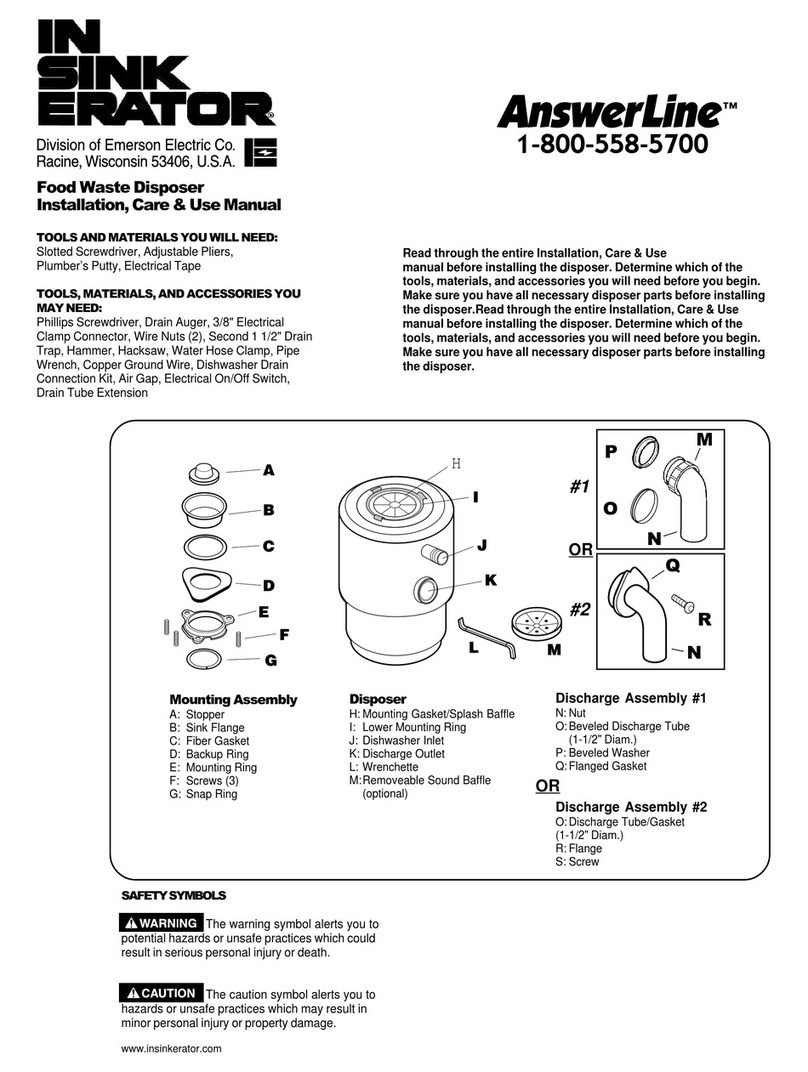
InSinkErator
InSinkErator Badger 444 Installation, care & use manual
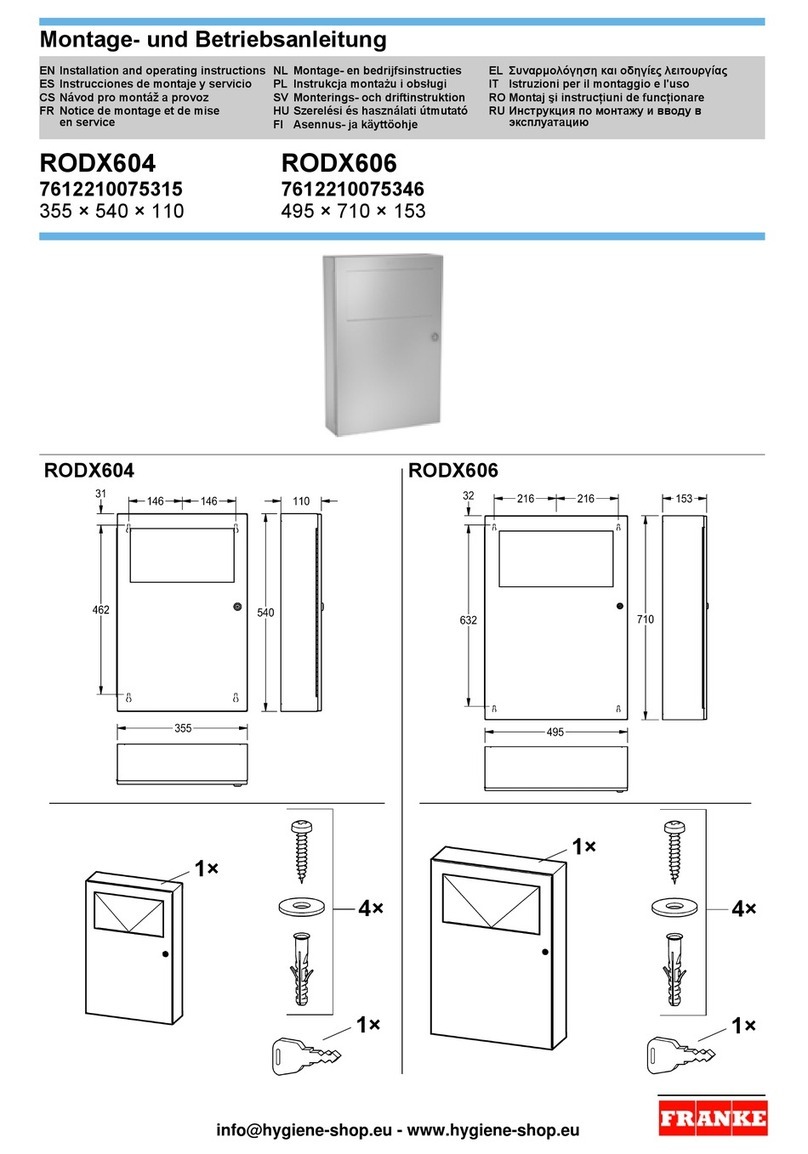
Franke
Franke RODX604 Installation and operating instructions
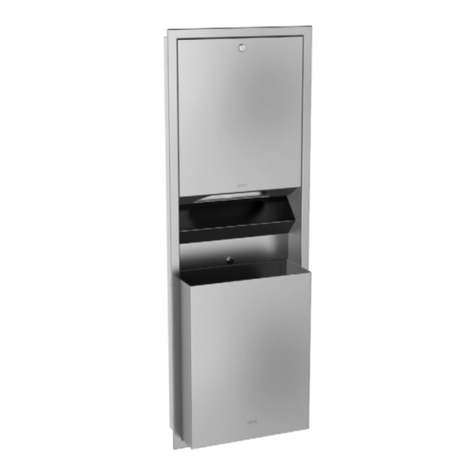
Franke
Franke RODX602E Installation and operating instructions

Gladiator
Gladiator GACP15XXMG0 Use & care guide

Mistral
Mistral Ultra 10498 Specification sheet
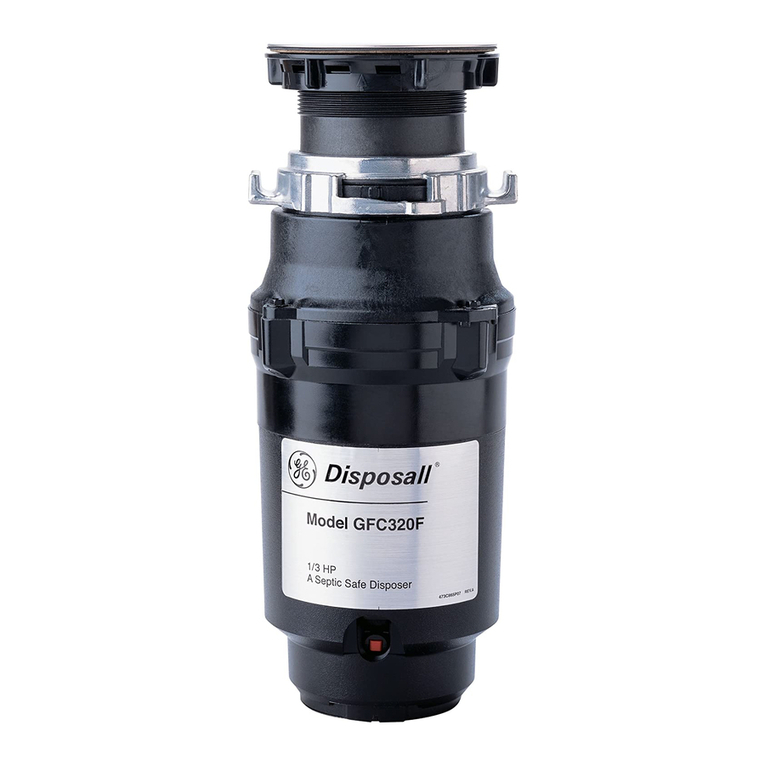
GE
GE GFB760F Owner's Manual & Installation Instructions
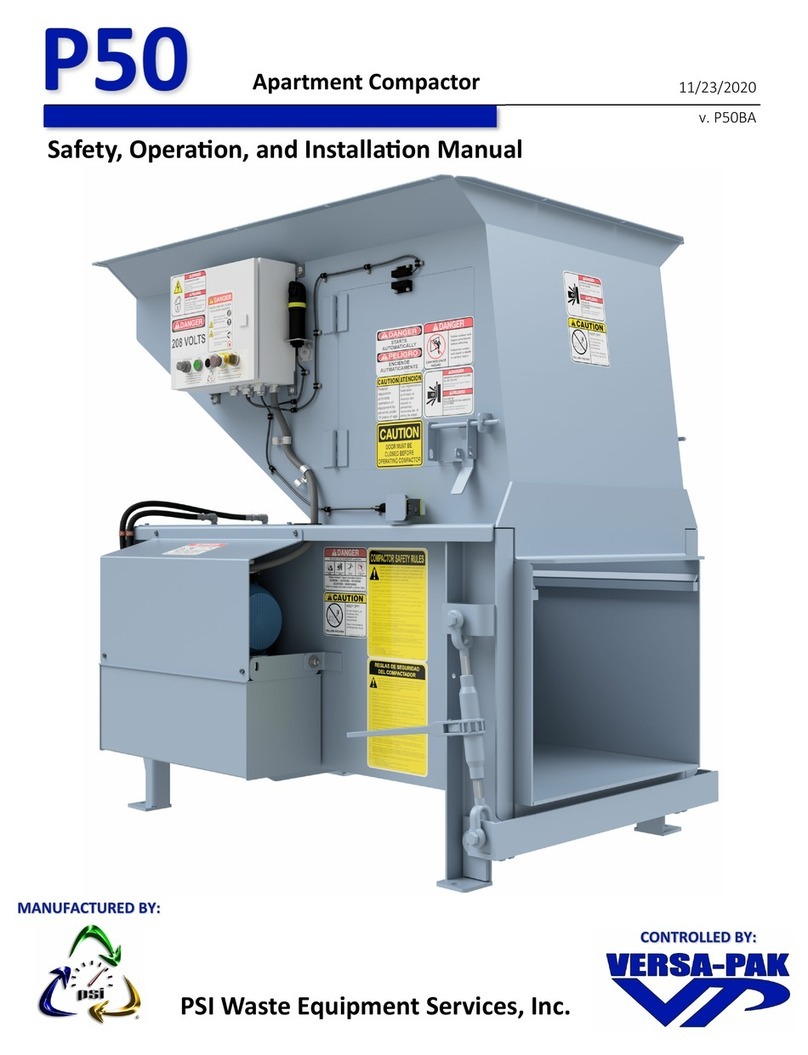
PSI
PSI VERSA-PAK P50 Operation and installation manual

lamart
lamart SENSOR Series PRODUCT INFORMATION AND INSTRUCTIONS
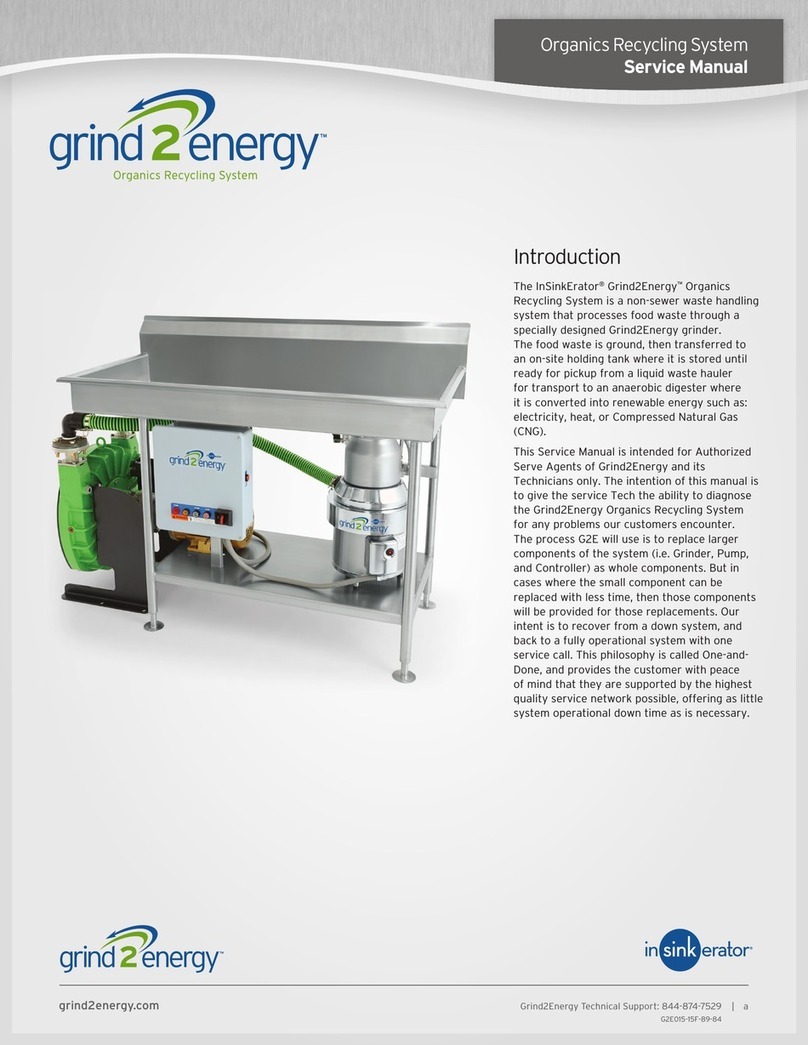
Emerson
Emerson InSinkErator Grind2Energy Service manual

Tramontina
Tramontina 94522/003 Quick user guide
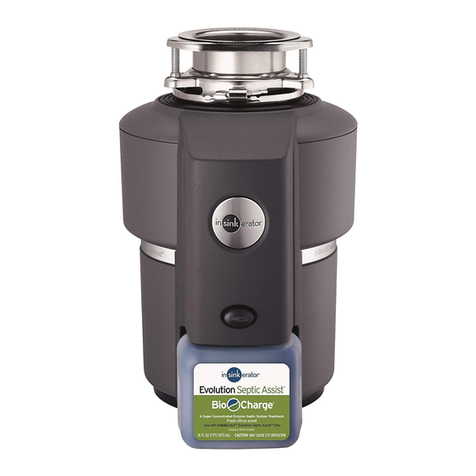
InSinkErator
InSinkErator Evolution Septic Assist owner's manual

MQ Multiquip
MQ Multiquip Mikasa MVCe64V Operation manual
